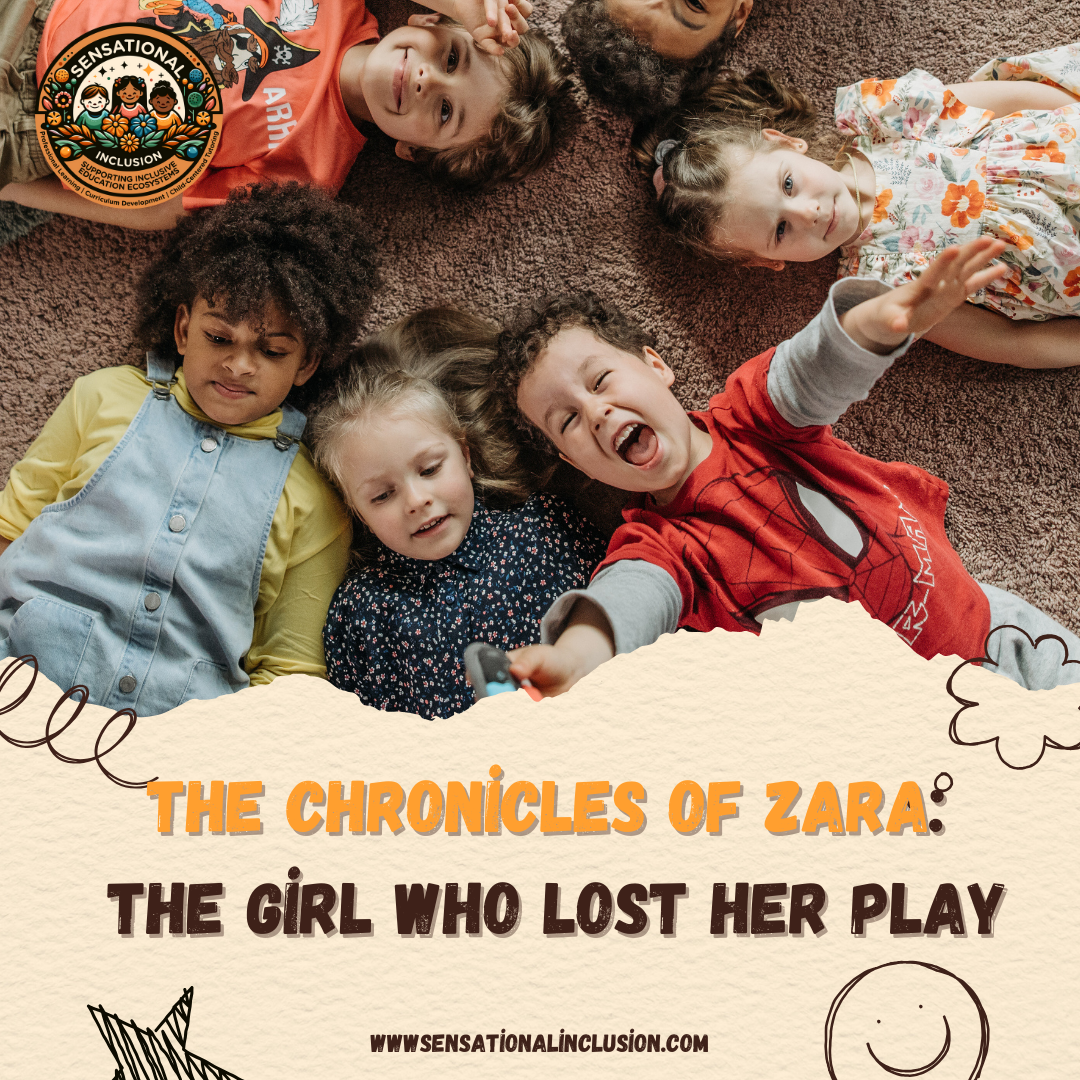In the heart of a bustling city, where skyscrapers kissed the clouds and the streets hummed with life, there was a school named Greenwood Elementary. It was in this school that our story unfolds, about a girl named Zara, with eyes as bright as the stars and a smile that could light up the darkest room.
Zara was a whirlwind of energy and curiosity, with a laugh that echoed through the hallways of Greenwood. But there was a problem. Zara, like many of her peers, especially those who shared her rich, ebony skin tone, often found herself on the receiving end of the school’s discipline. Her transgressions? Sometimes a giggle deemed too loud, a question too many, or an enthusiasm that outshone the dull, gray classroom walls.
The punishment was always the same – no playtime. While her classmates dashed out to the playground, Zara would sit by the window, chin resting on her hands, watching the others play. The swings would swing, the ropes would turn, and laughter would fill the air, but Zara’s world remained silent and still.
As days turned into weeks, and weeks into months, Zara’s light began to dim. The girl who once bubbled with joy and curiosity now drifted through the halls like a shadow. Her teachers, wrapped up in their world of rules and order, failed to notice the spark fading from Zara’s eyes.
But then, something magical happened. One day, during her usual window-side vigil, Zara noticed a little bird hopping on the windowsill. The bird was tiny, with feathers as black as night, but it sang the most beautiful song Zara had ever heard. It was a song of freedom, of soaring high above the playgrounds and the rules that kept her grounded.
Inspired by her feathered friend, Zara began to draw. She drew playgrounds where every child played, where laughter was the language, and joy was the game. She drew herself, not sitting by the window, but swinging high into the sky, her laughter mingling with the others.
Her drawings caught the eye of Ms. Lindsey, a young teacher who believed that every child deserved to play. Moved by Zara’s art, Ms. Lindsey took it upon herself to spark a change. She spoke to the other teachers, to the principal, and to anyone who would listen about the importance of play, not just for some, but for all.
Slowly but surely, the tides began to turn at Greenwood Elementary. Playtime became a right, not a privilege. Laughter and joy returned to the playground, and with it, the light returned to Zara’s eyes.
Years later, Zara would look back at her time at Greenwood with a bittersweet smile. She remembered the window, the bird, and the drawings that helped change the heart of a school. She became a beacon of hope, an advocate for play equity, ensuring that no child would ever have to watch from the sidelines again.
And so, the chronicles of Zara, the girl who lost her play but found her voice, became a tale whispered in the halls of Greenwood Elementary – a reminder that every child deserves the freedom to play, to laugh, and to soar.
Understanding Play Equity: A Framework for Schools and Advocacy for Parents
In the narrative of Zara at Greenwood Elementary, we find more than just a story; we discover a call to action. Zara’s experience, a reflection of the disparities in play opportunities, especially for children of color, demands our unapologetic commitment to change. At Sensational Inclusion, we take this call seriously, crafting a model that not only addresses but actively dismantles the barriers to play equity. This model isn’t just a suggestion; it’s a set of unapologetic demands for true equity in play, encapsulated in our powerful acronym: PLAY.
P.L.A.Y: The Sensational Inclusion Model for True Play Equity
P – Proactive Policies
- Demand: Schools must develop and enforce policies that guarantee playtime for all students, explicitly stating that play is a right, not a privilege.
- Action: Implement a zero-tolerance policy against the use of playtime as a punitive measure.
L – Liberating Spaces
- Demand: All play spaces must be inclusive, accessible, and designed to cater to a diverse range of abilities and cultural backgrounds.
- Action: Conduct regular audits of play facilities to ensure they meet these standards.
A – Advocacy and Awareness
- Demand: Schools and communities must engage in continuous education and advocacy to promote the importance of play equity.
- Action: Organize workshops and training sessions for educators, parents, and community members on cultural sensitivity, inclusivity in play, and the developmental importance of play.
Y – Youth Voice
- Demand: Children’s voices and choices must be central in designing and implementing play opportunities.
- Action: Establish forums and councils where children can express their play preferences and experiences, ensuring their voices lead the change.
Implementation and Accountability
To ensure the PLAY model is not just aspirational but actionable, Sensational Inclusion will:
- Partner with Educational Institutions: Work closely with schools to integrate the PLAY model into their curriculum and culture.
- Monitor and Evaluate: Regularly assess the implementation of the PLAY model in schools and communities, using both qualitative and quantitative measures.
- Community Engagement: Foster strong community ties to build a supportive network for play equity advocacy.
- Resource Allocation: Ensure that schools and communities have the necessary resources to implement the PLAY model effectively.
Conclusion: A Unapologetic Stand for Play Equity
Inspired by Zara’s story, Sensational Inclusion’s PLAY model is more than a framework; it’s a movement. It’s an unapologetic stand to ensure that every child, irrespective of their race, socioeconomic status, or ability, has equitable access to the transformative power of play. We invite educators, parents, and community leaders to join us in this crucial mission, advocating for a world where play is recognized not just as a simple activity, but as a fundamental right for every child.

